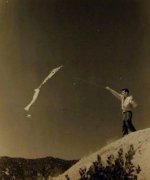
Here are some of my triumphs - and failures. I think my worst score was a case of a 768 piece puzzle on which I made 304 errors. Terrible! The pieces were all approximately square with very similar bumps and dents on opposing sides. The original was a painting, thus, the amount of information per unit area was small compared to a photographic original. A puzzle of 649 pieces in which the original was a photograph entailed 94 errors. A round puzzle of a painted montage was relatively easy - 501 pieces and 6 errors. A round very complex old map of 503 pieces cost 12 errors. Two very similar reproductions of embroidery, each with 513 pieces ran 19 and 22 errors respectively. Another good score was on a round puzzle of 509 pieces with only 8 errors. This was a montage of lettering and drawing in which the continuity of the lettering was a potent clue. An octagonal Rembrandt painting of 653 pieces cost me 124 errors.
If the business of working jigsaw puzzles can be adequately motivated then they could be used as a tool for evaluating an important visual skill. It is also possible that a proper scoring scheme may provide such motivation. Thus a system of scoring may, at the same time, become a technique for studying the visual, and interaction of observational skills and memory function, and also a way of training mnemonic skills.
[Originally published in The Worm Runner's Digest, 11, 1 (83-84). 1969.]


